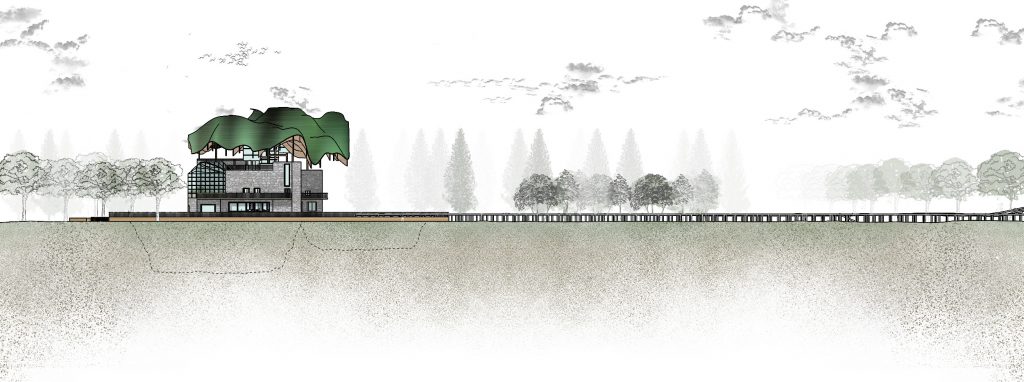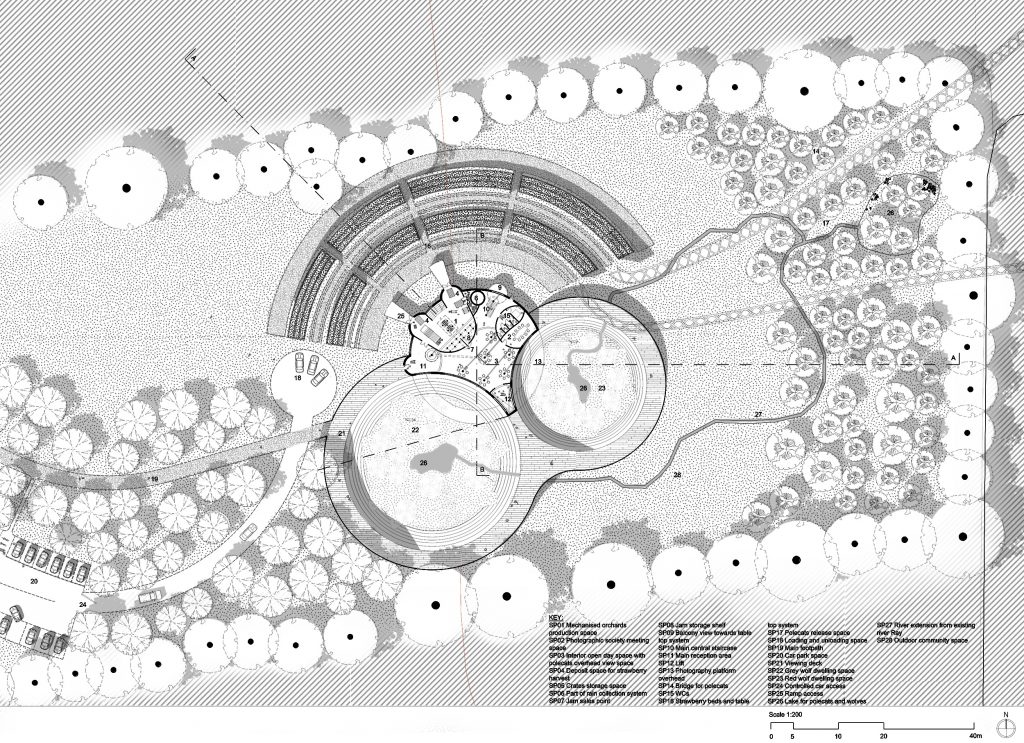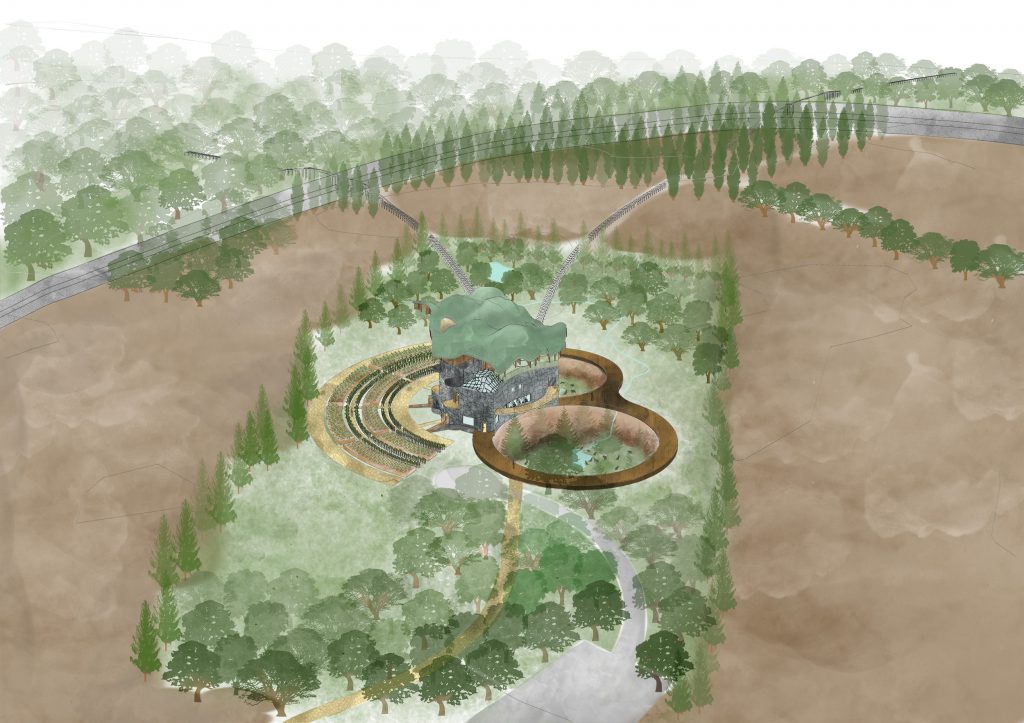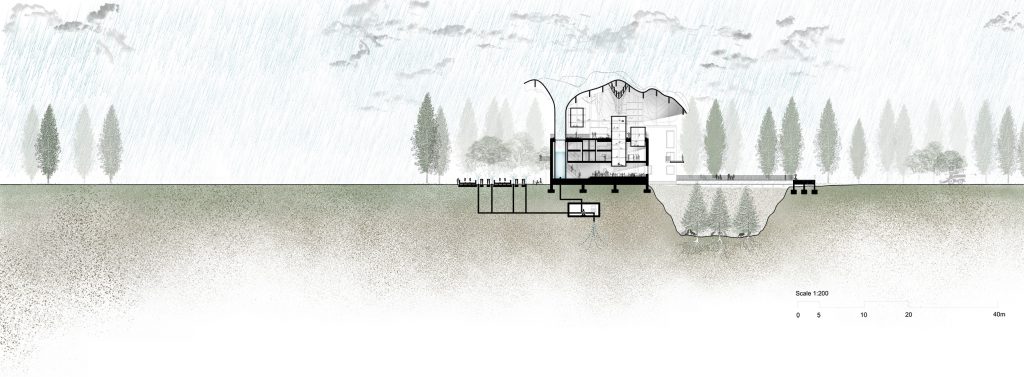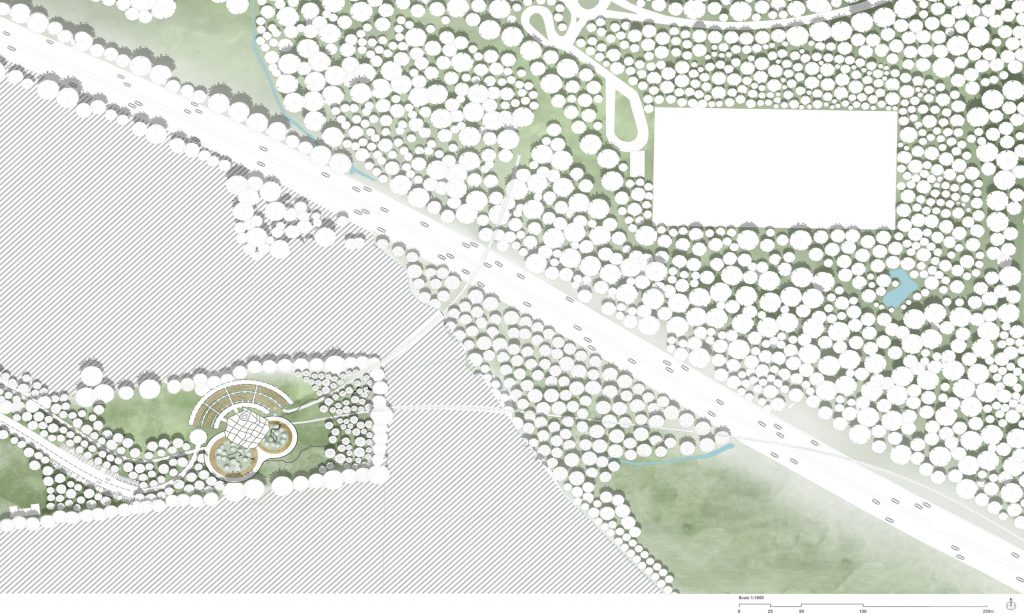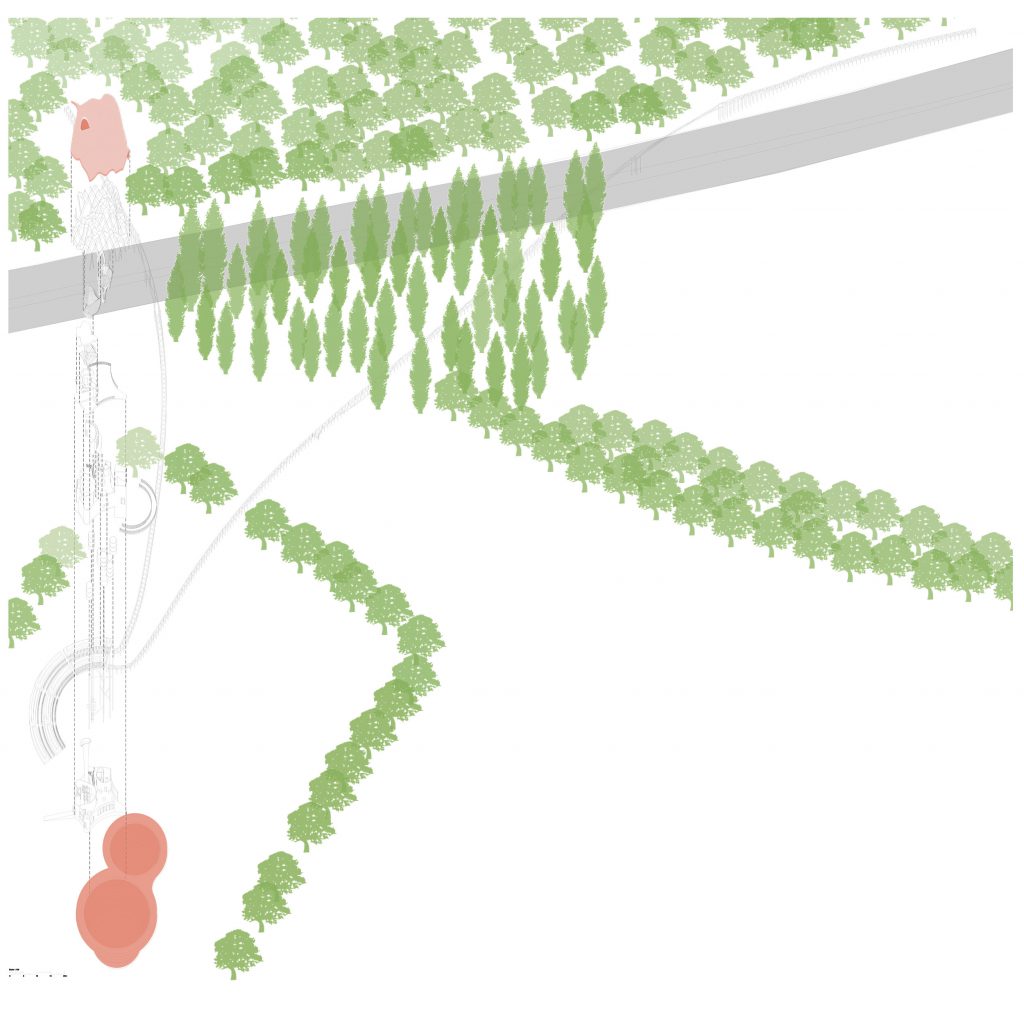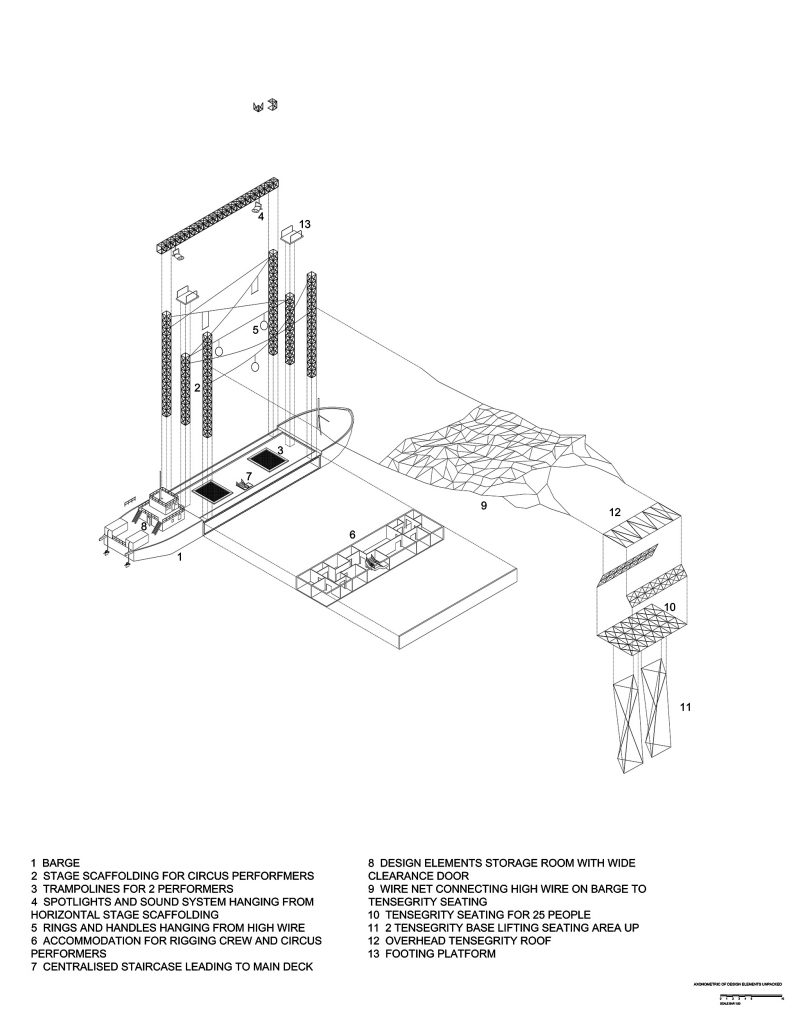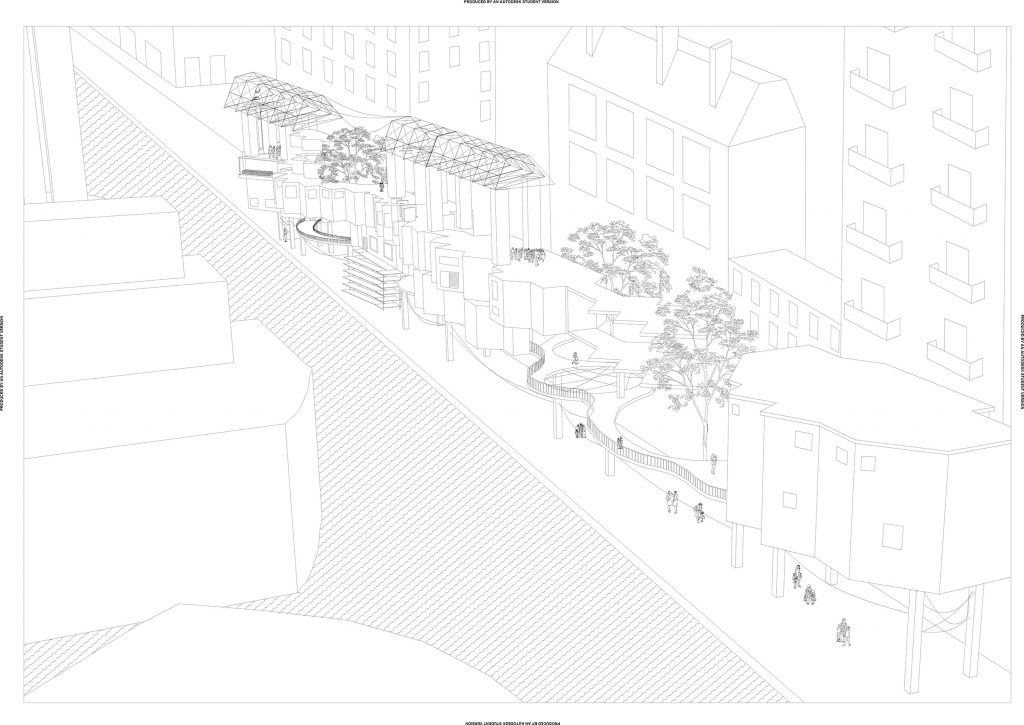Mahin Khan
Inhabiting Fragolupus: A Sweet Rescue and Rehab checkpoint
Considering the little grassland and woodland that is left today south of Swindon, Fragolupus looks at the defragmentation caused by the M4 for the once, far, and wide Croft Wood. It aims to reintroduce trees and reduce the number of deaths polecats go through due to the high-speed traffic on the M4. In response, a bespoke animal bridge is introduced spanning towards the recorded sightings of other polecats beyond the M4. The biome of the site and climatic conditions make it ideal for growing strawberries, which is farmed, harvested, and used in the jam-making production space, and finally sold to visitors. The growth of strawberries is made sustainable through an organic roof rainwater collection system, which helps to distribute water to the irrigation system placed by the strawberry beds and table-top system. Excess dirty water is ejected into the subsoil and another portion of clean water distributed to the building for utility purposes, such as sinks and toilets. In response to the type of biome and climate, the endangered animals to revive are the Red and Grey wolves, which are to be imported and exported from northeast America. They are to be taken care of and looked after in an outdoor excavated pit, which helps to protect them from the noise pollution from the M4 as well as creating a forest of trees that resemble their natural habitat, aiming to not make them feel in captivity and molded into the subsoil caves for sleeping.
Considering the little grassland and woodland that is left today south of Swindon, Fragolupus looks at the defragmentation caused by the M4 for the once, far, and wide Croft Wood. It aims to reintroduce trees and reduce the number of deaths polecats go through due to the high-speed traffic on the M4. In response, a bespoke animal bridge is introduced spanning towards the recorded sightings of other polecats beyond the M4. The biome of the site and climatic conditions make it ideal for growing strawberries, which is farmed, harvested, and used in the jam-making production space, and finally sold to visitors. The growth of strawberries is made sustainable through an organic roof rainwater collection system, which helps to distribute water to the irrigation system placed by the strawberry beds and table-top system. Excess dirty water is ejected into the subsoil and another portion of clean water distributed to the building for utility purposes, such as sinks and toilets. In response to the type of biome and climate, the endangered animals to revive are the Red and Grey wolves, which are to be imported and exported from northeast America. They are to be taken care of and looked after in an outdoor excavated pit, which helps to protect them from the noise pollution from the M4 as well as creating a forest of trees that resemble their natural habitat, aiming to not make them feel in captivity and molded into the subsoil caves for sleeping.
Ballet on high wire
Ballet on a high wire is an “on-the-go” moving circus, travelling on a barge through a selected canal through Paris, the canal Saint-Martin. The circus specialises specifically in high wire ballet and aerobics carried out on high-off-the ground tension wires. The aim of “Ballet on high wire” was to unify the public and the circus performers in an imaginative and sophisticated way through tensegrity structures.
Part 1 required the design of a suitable repurposing design for an existing barge concerning the type of circus practising on the move. In addition, the performers are to be provided with suitable accommodation areas on the travelling barge. For flexibility, a performance stage is featured on the barge and a temporary tensegrity structure to host the audience on the land enveloping the canal when performing.
Part 2 required the design of a semi-temporary building facility that acts as a respite centre featuring spas, massage rooms, sauna rooms and showers for the ballet performers as well as more practising areas that are composed of more integrated tensegrity structures with the building. It features more luxurious and permanent accommodation spaces as opposed to the barge. The building is elevated on stilts on a narrow road so that people walking do not find the only circulating road blocked off. Furthermore, the facility features exposed performance stages on the top floor, semi-enclosed by tensegrity structures, visible from the outdoors.
Ballet on a high wire is an “on-the-go” moving circus, traveling on a barge through a selected canal through Paris, the canal Saint-Martin. The circus specializes specifically in high wire ballet and aerobics carried out on high-off-the-ground tension wires. The aim of “Ballet on high wire” was to unify the public and the circus performers in an imaginative and sophisticated way through tensegrity structures.
Part 1 required the design of a suitable repurposing design for an existing barge concerning the type of circus practicing on the move. In addition, the performers are to be provided with suitable accommodation areas on the traveling barge. For flexibility, a performance stage is featured on the barge and a temporary tensegrity structure to host the audience on the land enveloping the canal when performing.
Part 2 required the design of a semi-temporary building facility that acts as a respite center featuring spas, massage rooms, sauna rooms, and showers for the ballet performers as well as more practicing areas that are composed of more integrated tensegrity structures with the building. It features more luxurious and permanent accommodation spaces as opposed to the barge. The building is elevated on stilts on a narrow road so that people walking do not find the only circulating road blocked off. Furthermore, the facility features exposed performance stages on the top floor, semi-enclosed by tensegrity structures, visible from the outdoors.



